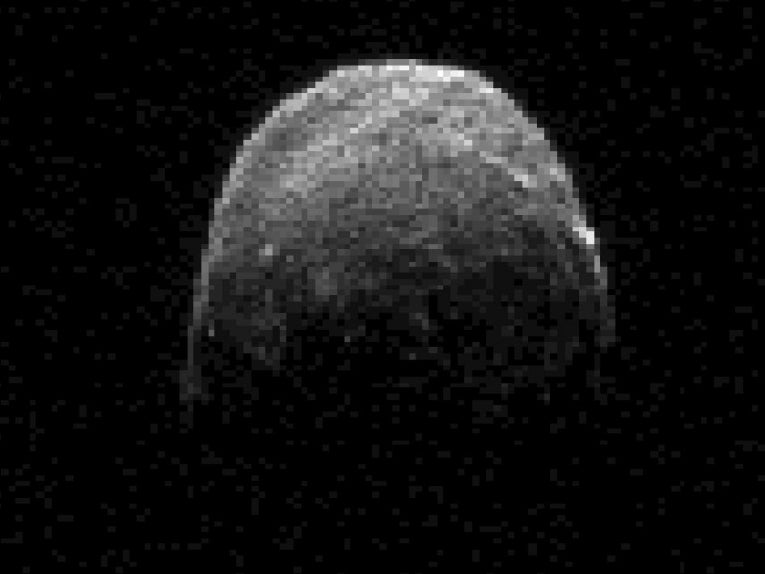The largest asteroid in 35 years to pass close to Earth has been caught on radar. The images of Asteroid 2005 YU55, which is as large as an aircraft carrier, have been captured by the North American Space Agency's Deep Space Network antenna, in Goldstone, California.
The asteroid is due to safety pass-by Earth today, 8 November, 201,700 miles (324,600 kilometres) from the centre of the Earth - around 85% of the distance from the Earth to the Moon.
The image was captured when Asteroid 2005 YU55 was around 860,000 miles (1.38 million kilometres) away. The last time a similar event happened was in 1976 and it is not predicted to occur again for another 17 years.
The asteroid was first observed for around two hours on 4 November by the giant antenna, which is 230-feet (70 metres) wide. It is proposed to track the space rock for four hours daily from 6-10 November.

This radar image of asteroid 2005 YU55 was obtained on Nov. 6, 2011, at 1:45 p.m. PST (4:45 p.m. EST/2145 UTC), when the space rock was at 6.4 lunar distances, which is about 1.5 million miles, or 2.46 million kilometers, from Earth; Image credit: NASA/JPL-Caltech
In addition, Asteroid 2005 TU55 will be tracked by radar at the Arecibo Planetary Radar Facility in Puerto Rico, on the day it is due to be closet to Earth.
The gravitational pull from the asteroid will have no practical effect and will not adversely influence tectonic plates or tides.
Even although the asteroid follows an orbit that occasionally brings it near Earth, Mars and Venus, the present circuit is the nearest it has come for more than 200 years.
Although the asteroid is in an orbit that regularly brings it to the vicinity of Earth, Venus and Mars, the 2011 encounter with Earth is the closest it has come for at least the last 200 years.
The space agency uses high-powered telescopes on the ground and in space to discover, measure and monitor asteroids and comets that come near to Earth.
The Safeguard operations, which find out if there is any danger to the Earth, are carried out as part of NASA's Near-Earth Object Observations Program. They are based at the Jet Propulsion Laboratory, in Pasadena, California, and managed on behalf of NASA's Science Mission Directorate in Washington.










